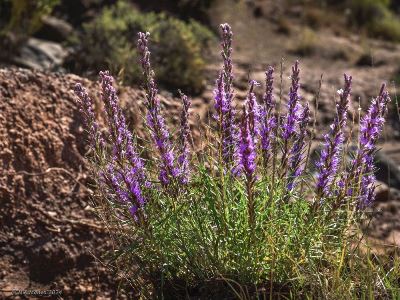|
The Bloom Blog Blooming this week in the environs of Abiquiú By Wildflowers of the Southern Rocky Mountains Image Courtesy of Mario Manzo
Found in open sandy and rocky areas Seen blooming in September in Red Wash Basin Dotted Blazing Star grows to 32 inches with unbranched stems and narrow leaves. Small lavender to pale pink flowers grow in narrow spikes that bloom from the top down. It has a remarkable root system with lateral branches extending to 5 feet and the taproot reaching up to 16 feet. Domestic livestock like the Dotted Blazing Star, particularly sheep. Elk and White-Tail Deer also eat it; it is sometimes called Deer Potatoes. A variety of small rodents like it, especially the roots, and it is the only source of food for some butterflies. Native Americans used the plant for food and medicinal purposes. The root was boiled or baked before eating. Plains tribes used the Dotted Blazing Star to make a tea that was used for kidney, bladder, and menstrual problems, water retention, gonorrhea, colic, sore throat and laryngitis. Mashed roots were applied to snake bites. Dry roots were burned like incense to relieve headaches, nosebleeds, and tonsillitis. Source. If you are trying to identify a different flower then you can check what other flowers bloom this month. If you cannot identify a flower from the website, send a photo and where you took it to [email protected]. Read online for tips.
0 Comments
Leave a Reply. |
AuthorI am Marilyn Phillips, a native of England, whose love of nature and the outdoors from childhood brought me by a circuitous route to Crested Butte, Colorado in 1993 and 16 years later to northern New Mexico. My exploration of the many trails in these areas, my interest in wildflowers and photography, and career in computer system design came together in this creation. If you have any corrections, comments or questions, please contact me by email. Archives
September 2025
Categoriescopyright © 2020
|



 RSS Feed
RSS Feed